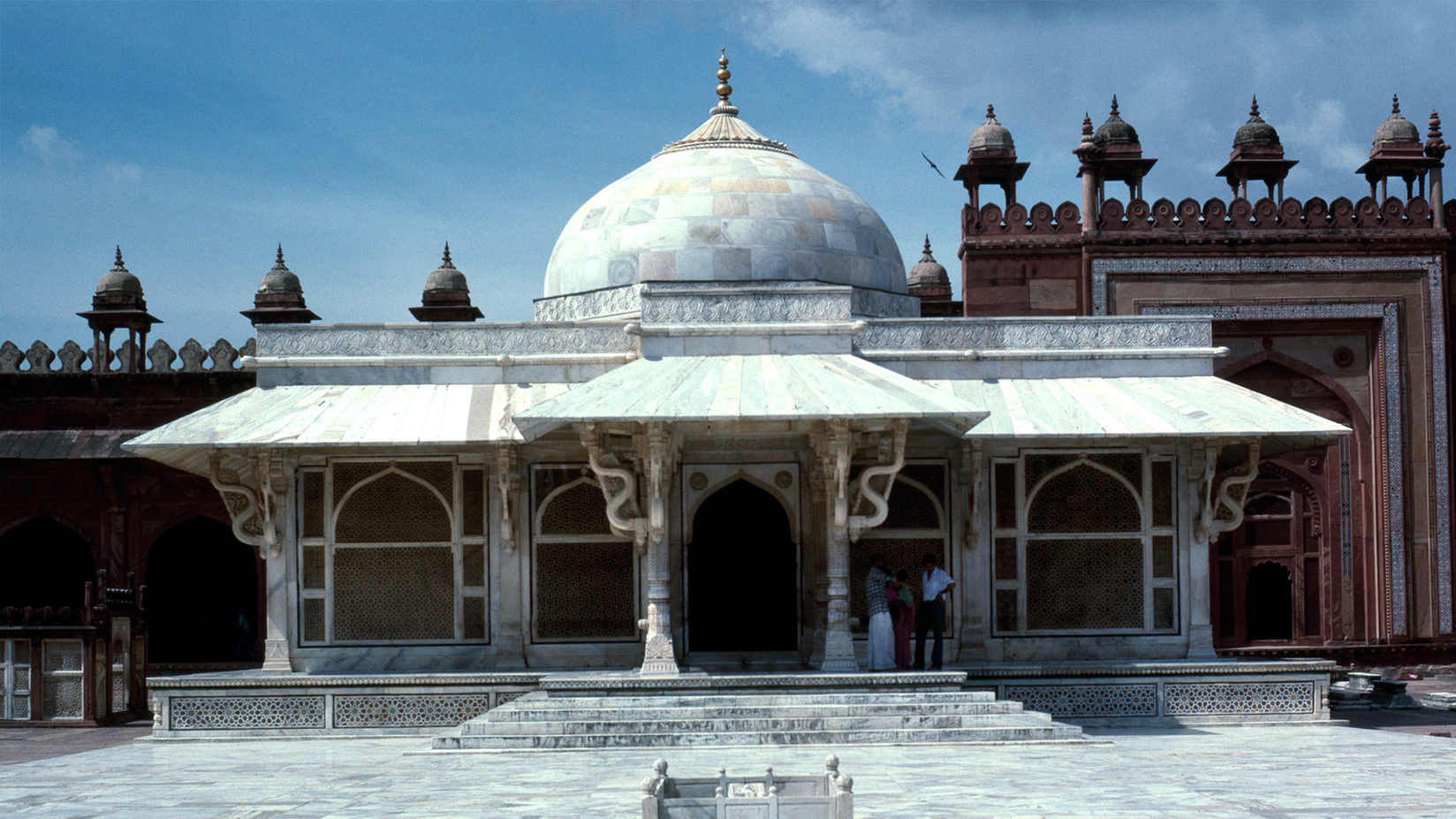



Welcome to the
Itimad Ud Daulah

Home to perhaps some of the finest examples of architecture in the world, Agra is a historian's paradise. Some of the treasures of architecture that grace the city include the Taj Mahal, Agra Fort and Itimad-ud-Daula's Tomb.
The Tomb of Itimad-Ud-Daula was constructed by the Mughal queen Nur Jahan between 1622 and 1628 where her father Itimad Ud Daula was buried. Itimad Ud Daula or Mirza Ghiyas-ud-din or Ghiyas Beg was the father of Nur Jahan, the Mughal empress and wife of Jahangir. He was later also made a minister and a trusted treasurer in Akbar's court. It was as a tribute to him, that Nur Jahan built the mausoleum after his death. The first example of a tomb built on a riverbank in India, the Itimad Ud Daula tomb houses the body of Mirza Ghiyas Beg, the father Mughal Empress Noor Jahan who again was Emperor Jahangir's wife. This beautiful tomb situated on the banks of the Yamuna is also known as the 'baby Taj'. Built around 1625 AD, the Itimad Ud Daula Tomb, has many features that were later incorporated during the construction of the Taj Mahal. Interestingly, the carvings on this monument are said to be even better than that of the Taj.
Another distinguishable feature of this tomb is that it has been built in the Central Asian pattern of a domed structure complete with a formal garden, waterways and paths laid out in a geometrical pattern. The Itimad Ud Daulah's tomb, built in pure marble is also the first Mughal structure to make extensive use of the Pietra Dura style of inlay work. One of the most beautiful tourist attractions in Agra, the Itimad Ud Daulah would really be an interesting experience for tourists.
History
The tomb of Itimad-ud- Daulah resembles a silver jewel box in marble. Mirza Ghiyas Beg or Itimad-ud- Daulah was the lord treasurer in the court of Jahangir. It was after his daughter Nur Jahan married Jahangir that Mirza Ghiyas Beg was made the lord treasurer of Jahangir's empire. Nur Jahan had developed a coterie of men around her. She had assumed responsibility in the court. The network of loyal men helped to strengthen her position in administrative affairs. Nur Jahan took advantage of the intoxication and extravagance of the aged king, and she gradually became more powerful. Mirza Ghiyas Beg played a significant role in the Nur Jahan Junta as the treasurer. Mirza Ghiyas Beg was a poor merchant who lived in Persia. He was the trusted treasurer in Akbar's court. He rose to become the chief minister during Jahangir's reign. He was given the epithet Itimad-ud-Daula, or the pillar of the state. His daughter Meherun-nisa was a peerless beauty. She later came to be known as Nur Jahan. The Mughal emperor Jahangir was enslaved by her beauty. Nur Jahan played a significant role in Jahangir's court with her father's support. When Itimad-ud-Daulah died in 1622, Nur Jahan decided to build a mausoleum in the loving memory of her father. Itimad-ud-Daulah was buried in a tomb that resembles a jewel box and set in a garden. This p4eaceful and serene garden located on the banks of the Yamuna was to be a precursor to the Taj Mahal built later extensively.
Architecture
The tomb itself is one of the best examples of architecture of the region. Said to be one of the most important influences behind the architecture of the Taj Mahal, the Tomb of Itimad Ud Daulah is one of the finest examples of a specific genre of mausoleum architecture called a Tomb in a Garden. The construction is such that the tomb resembles a jewel-box set in the midst of a garden. Tranquil and lush green, the garden where the tomb is constructed is set on the banks of the river Yamuna. Famous for being the first tomb in the entirety of India to be built entirely of white marble, the Tomb of Itimad Ud Daulah is a must see for all visitors visiting the historic city of Agra.A perfect example of Islamic architecture, the tomb is characterized by arched entrances, octagonal shaped towers or minarets, use of exquisitely carved floral patterns, intricate marble-screen work and inlay work. However, added to this is the influence of the locality that manifests itself in the absence of a dome and the presence of a closed kiosk on top of this building as well as the use of chhatris (small}domed canopies, supported by pillars) atop the four towers (minarets) instead of proper domes, which is more reflective of the Islamic style of architecture.

Features
The tomb of Itimad-ud-Daulah marked a significant departure from the Mughal style of architecture. It best exemplifies Islamic style of architecture. It is one of the first tombs to be built in marble. Built on the banks of River Yamuna, the designs and patterns of the mausoleum were later used in building the Taj Mahal. The Tomb has a Central Asian dome structure. The waterways and paths are laid out in a geometrical pattern- a feature also found in the Taj Mahal. Its paved pathways are flanked by lush green gardens. Inlaid semi-precious stones in Pietra dura style were first used in the construction of the tomb, which is later used in the design of the Taj. The intricate carvings on the wall of the tomb include flowers, trees, fruit, animals and birds as well as wine jars and even people. The jali screens set in arched recesses and the four small minarets rise at the four corners of the small tomb structure are splendid. Due to the intricate carvings on the marble and marble screen work its gives an impression of a majestic and gallant object.
Say Hello, to Agra Development Authority's Mobile App ➤ Download the App Now

Agra Development Authority Monuments Entry Timetable
Ticket window opens 30 minutes before sunrise | Ticket window closes 30 minutes before sunset Taj Mahal remains closed on every Friday.
.png)










